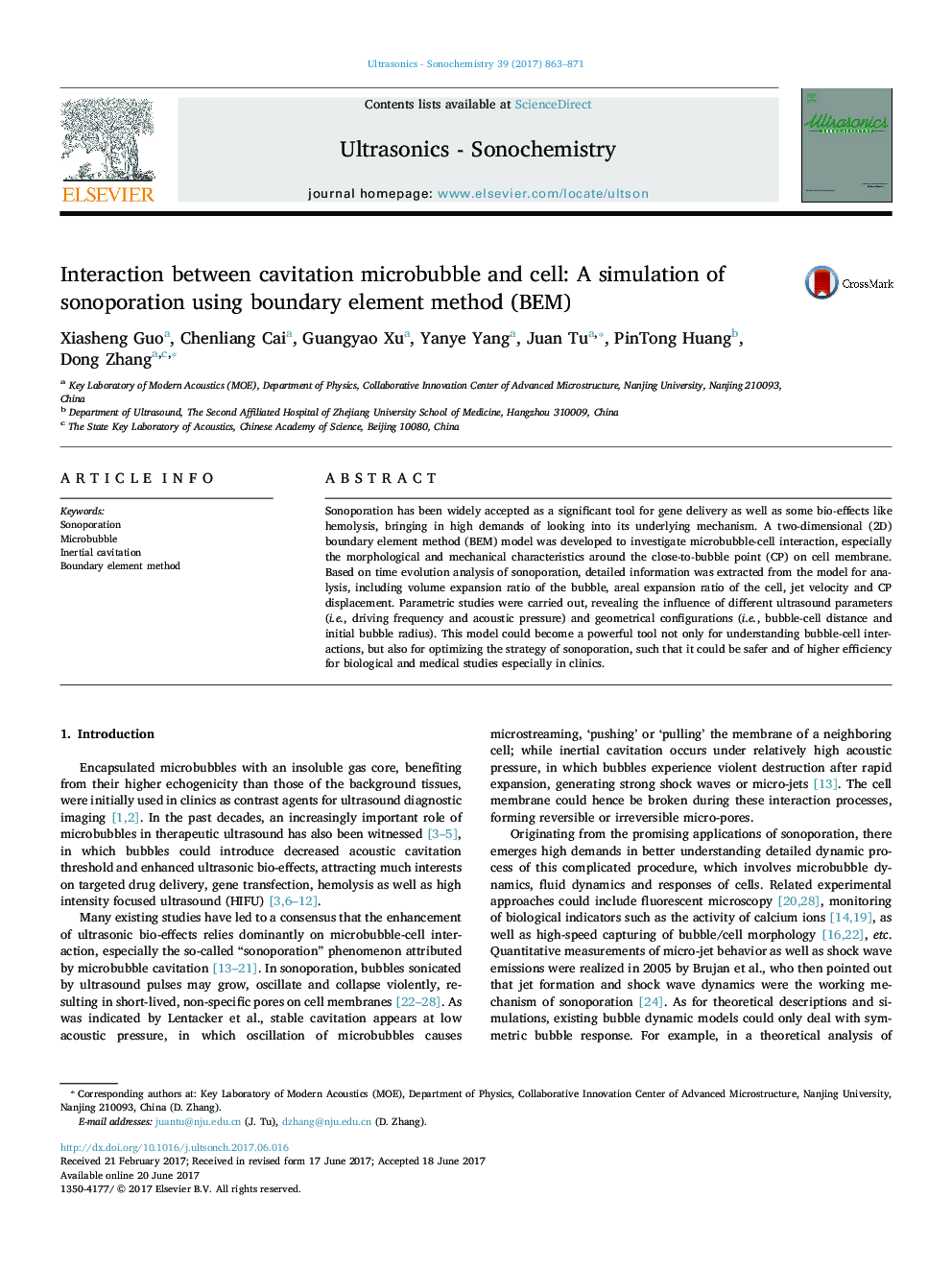| Article ID | Journal | Published Year | Pages | File Type |
|---|---|---|---|---|
| 5144613 | Ultrasonics Sonochemistry | 2017 | 9 Pages |
Abstract
Sonoporation has been widely accepted as a significant tool for gene delivery as well as some bio-effects like hemolysis, bringing in high demands of looking into its underlying mechanism. A two-dimensional (2D) boundary element method (BEM) model was developed to investigate microbubble-cell interaction, especially the morphological and mechanical characteristics around the close-to-bubble point (CP) on cell membrane. Based on time evolution analysis of sonoporation, detailed information was extracted from the model for analysis, including volume expansion ratio of the bubble, areal expansion ratio of the cell, jet velocity and CP displacement. Parametric studies were carried out, revealing the influence of different ultrasound parameters (i.e., driving frequency and acoustic pressure) and geometrical configurations (i.e., bubble-cell distance and initial bubble radius). This model could become a powerful tool not only for understanding bubble-cell interactions, but also for optimizing the strategy of sonoporation, such that it could be safer and of higher efficiency for biological and medical studies especially in clinics.
Related Topics
Physical Sciences and Engineering
Chemistry
Chemistry (General)
Authors
Xiasheng Guo, Chenliang Cai, Guangyao Xu, Yanye Yang, Juan Tu, PinTong Huang, Dong Zhang,
